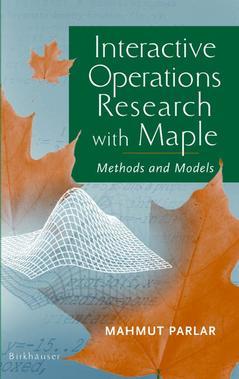Interactive Operations Research with Maple: Methods and Models has two ob jectives: to provide an accelerated introduction to the computer algebra system Maple and, more importantly, to demonstrate Maple's usefulness in modeling and solving a wide range of operations research (OR) problems. This book is written in a format that makes it suitable for a one-semester course in operations research, management science, or quantitative methods. A nwnber of students in the departments of operations research, management science, oper ations management, industrial and systems engineering, applied mathematics and advanced MBA students who are specializing in quantitative methods or opera tions management will find this text useful. Experienced researchers and practi tioners of operations research who wish to acquire a quick overview of how Maple can be useful in solving OR problems will find this an excellent reference. Maple's mathematical knowledge base now includes calculus, linear algebra, ordinary and partial differential equations, nwnber theory, logic, graph theory, combinatorics, statistics and transform methods. Although Maple's main strength lies in its ability to perform symbolic manipulations, it also has a substantial knowledge of a large nwnber of nwnerical methods and can plot many different types of attractive-looking two-dimensional and three-dimensional graphs. After almost two decades of continuous improvement of its mathematical capabilities, Maple can now boast a user base of more than 300,000 academics, researchers and students in different areas of mathematics, science and engineering.

